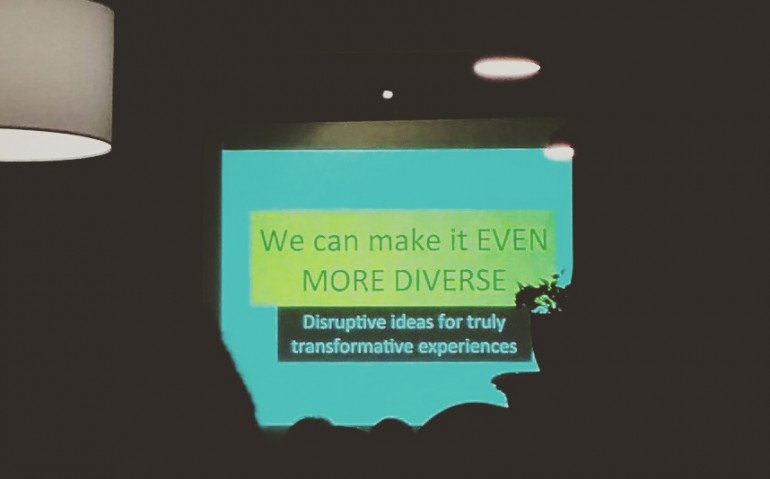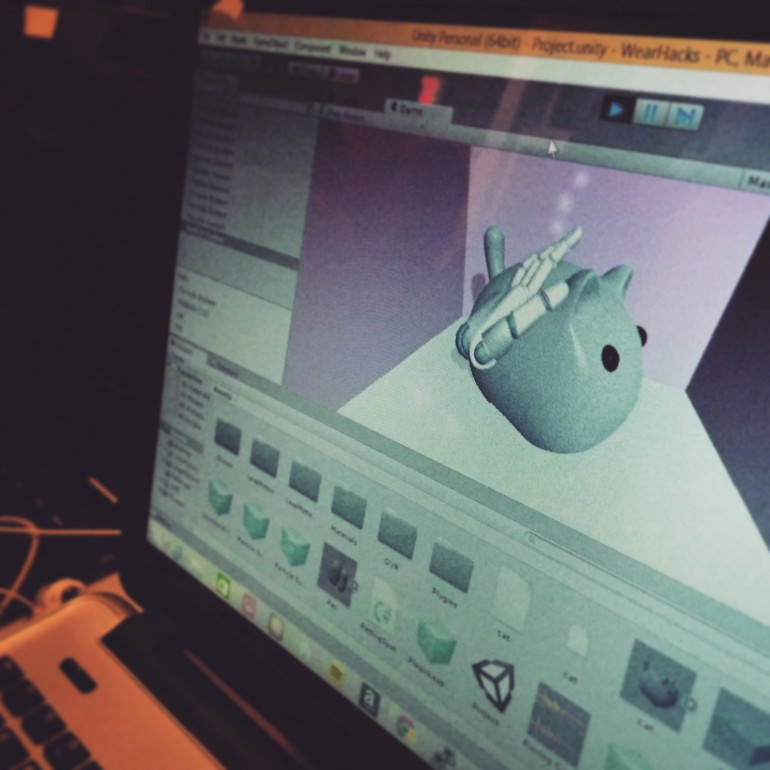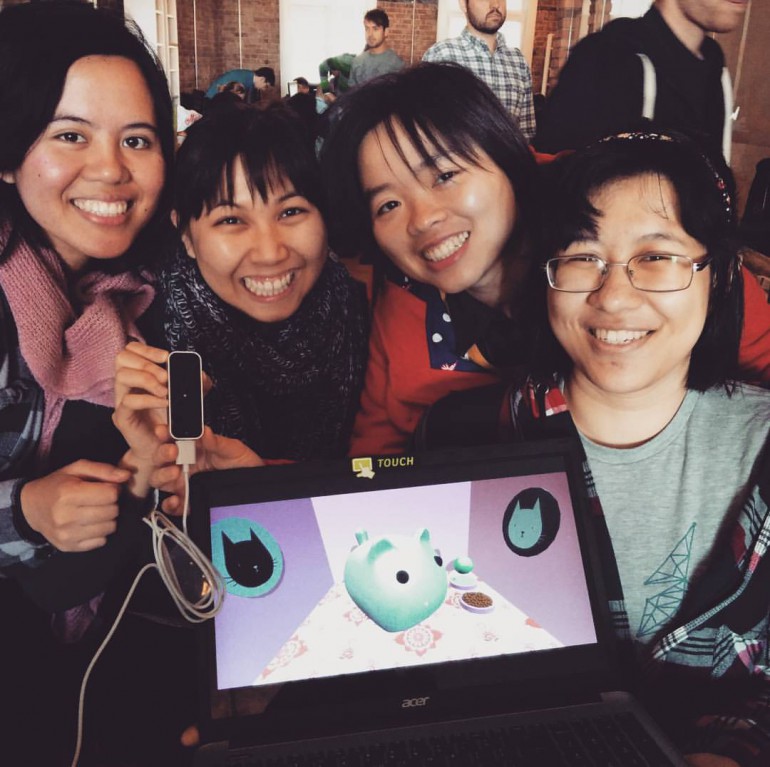TAG members Amanda Tom and Milin Li went to WearHacks earlier this month, where they participated in the hackathon along with Critical Hit alumni Nicole Pacampara, and Annie Mao, a fellow student from Computer Science. WearHacks is the biggest wearable hackathon in North America that gives access to hardware, hosts workshops from industry guests and mentors.

(Opening of WearHacks with Joanna Berzowska.)
The game we made is called ‘Pet Therapy’, which allows the player to pet a virtual pet cat and interact with the elements in the room, like cat wall decorations and a ball. The game uses the gesture detection of the Leap Motion, Unity as a game engine, and Blender for the creation of the character model. When petting the cat, it will react by making purring sounds. One of our main goals at WearHacks was to experiment with as many of the available hardware. Also, WearHacks judge and Concordia professor Joanna Berzowska encouraged the participants to think of applications of wearables that are currently not catered to in the market, and to move away from the general fitness applications that already exist. As a result, Pet Therapy is a simple game, yet we have found the repetitive motion to be rather relaxing and soothing.

We were interested in making an application based on hand motion and gesture recognition, so we tried two hardware: the Nod Ring, which is specifically is for one handed use, and the Leap Motion which is more based around the entire hand and can track up to two hands at a time. We experienced some difficulties in using the first hardware as the accuracy to track the movements of the hardware made it more difficult to use, and were unable to get it running with the software we had. It also featured the touch slider and buttons which were interesting, but we found it not intuitive and too difficult to use. Rather than spending too much time figuring out the technicalities, we decided to move to other similar hardware available. The Leap Motion was much easier to use and integrate, and the gesture tracking was quite precise. Pet Therapy uses the simple gestures of petting the cat to give the player the impression of petting a cat, which reacts to the interaction by making purring sounds and emitting a soft pink glow. The other elements in the game, like the cat wall decorations and the food bowl make the environment more friendly and warm, and allow the players to play with the motion detection.
Pet Therapy will soon be available in November for public playtesting in TAG.

